How to Identify, Evaluate, and Partner with the Best Wholesale Hair Vendors for Your Business
Introduction
The global hair industry, a vibrant and resilient sector valued at an impressive $80 billion, continues to captivate consumers worldwide with its diverse range of hair extensions and wigs. This multi-billion-dollar marketplace thrives on the intricate interplay between hair growers, wholesalers, retailers, and end-users, who collectively contribute to the ever-evolving landscape of beauty and self-expression. The allure of long, lustrous locks remains undiminished, driving consistent demand for high-quality hair products that enhance natural tresses or offer transformative style solutions.
At the heart of this industry lies the critical role played by wholesale hair vendors—the linchpins connecting raw material suppliers with businesses seeking to cater to the insatiable appetite for hair enhancements. These vendors act as pivotal procurement partners, ensuring a steady flow of premium hair products to meet the needs of salons, online retailers, and independent entrepreneurs engaged in the lucrative hair extension and wig trade.
Partnering with the right wholesale hair vendor is not merely a transactional decision; it is a strategic choice that can significantly impact a business's profitability, reputation, and competitive edge. Selecting a vendor who consistently delivers top-notch products, offers reliable service, and supports growth aspirations is tantamount to securing a solid foundation for success in this fast-paced and highly competitive market.
Recognizing the paramount importance of fostering productive relationships with wholesale hair vendors, this article sets out to serve as an exhaustive, authoritative resource on the subject. It aims to equip readers with a comprehensive understanding of the wholesale hair vendor ecosystem, arming them with the knowledge and tools necessary to identify, evaluate, and effectively collaborate with the most suitable suppliers for their unique business needs. By delving into industry insights, best practices, and real-world examples, this guide aspires to be the go-to reference for entrepreneurs and professionals navigating the intricate world of wholesale hair sourcing and partnership management.
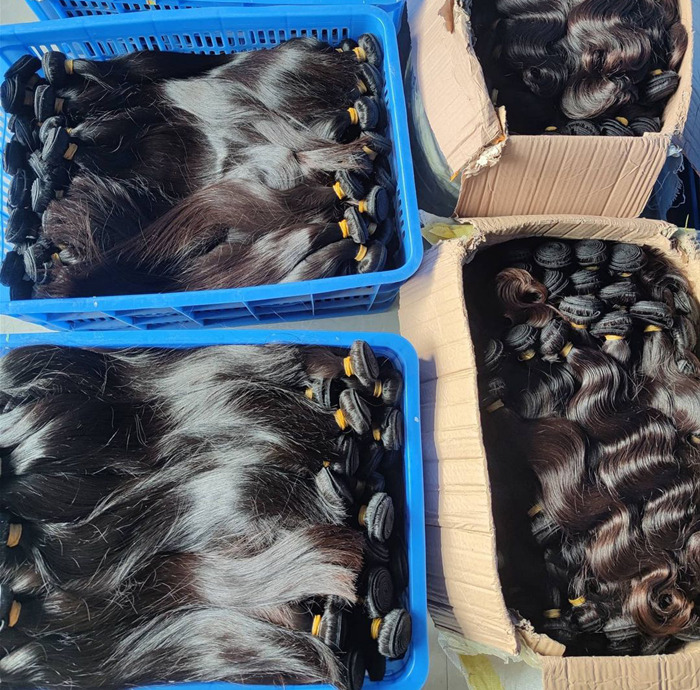
Understanding the Wholesale Hair Vendor Landscape
Definition and Role of Wholesale Hair Vendors in the Supply Chain
Wholesale hair vendors hold a crucial position within the intricate web of transactions and transformations that convert raw hair materials into the exquisite hair extensions and wigs sought after by millions worldwide. These entities essentially serve as intermediaries between the initial sources of hair—such as individuals donating their locks or specialized hair collectors—and the businesses that ultimately bring these products to market for end-users.
As suppliers, wholesale hair vendors undertake several key responsibilities, including:
- Sourcing: They procure hair from diverse origins, ensuring a broad spectrum of textures, lengths, and colors to accommodate a wide array of consumer preferences.
- Processing and Quality Control: They oversee the meticulous preparation and treatment of hair to meet industry standards and customer expectations, ensuring the hair is clean, healthy, and free from defects before being transformed into various hair extension and wig styles.
- Inventory Management: They maintain sufficient stock levels to promptly fulfill orders, balancing supply and demand while minimizing waste and obsolescence.
- Product Development: Many vendors invest in research and innovation, developing new hair extension technologies, custom blends, and proprietary processing methods to stay ahead in the market.
- Distribution and Logistics: They facilitate efficient shipping and delivery to clients worldwide, often providing flexible shipping options, tracking facilities, and dedicated account management services.
Types of Hair Vendors: Primary Producers, Intermediaries, and Factory-Based Suppliers
The wholesale hair vendor landscape encompasses a diverse array of players, each with distinct roles and capabilities:
- Primary Producers: These vendors directly source hair from donors or collectors, often operating in regions where hair donation is culturally accepted or economically incentivized. They may have exclusive access to rare or specialty hair types, offering businesses a unique selling point and competitive advantage.
- Intermediaries: As middlemen in the supply chain, these vendors aggregate hair from multiple sources, both primary producers and other intermediaries, to offer a broad selection to their clients. They may specialize in certain hair types, price ranges, or market segments, acting as a one-stop-shop for businesses seeking convenience and variety.
- Factory-Based Suppliers: These vendors typically combine hair sourcing, processing, and manufacturing under one roof, leveraging economies of scale and vertical integration to offer competitive prices and consistent quality. They often have extensive product lines, encompassing various hair types, colors, and textures, as well as a range of attachment methods, such as wefts, clips, tapes, and pre-bonded extensions.
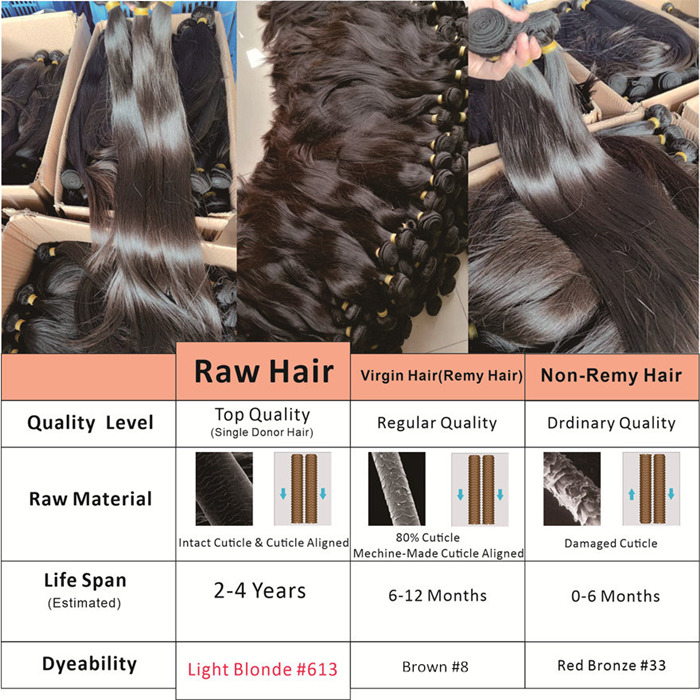
Market Dynamics and Trends
The global wholesale hair market is shaped by several influential factors and evolving trends:
- Global Sourcing Hubs: China, Vietnam, and India emerge as dominant players in the industry due to their abundant hair resources, established processing infrastructure, and cost-effective production capabilities. These countries not only supply domestic markets but also export to international destinations, catering to diverse aesthetic preferences and price points.
- Hair Types: Raw hair, sourced directly from a single donor without chemical processing or coloring, is highly prized for its natural look, strength, and versatility. Virginhair, minimally processed and machine made cuticle intact, offers good qualities but may require additional treatment before use. Synthetic hair, made from man-made fibers, is a budget-friendly alternative with varying degrees of realism and durability.
- Product Varieties: Hair weavesand wigs dominate the market, offering consumers numerous styling possibilities. Weaves involve adding hair to one's natural locks using tracks or small bundles, while wigs provide a complete hair coverage solution. Both come in various forms, such as lace front, full lace, or u-part, and can be customized to suit individual preferences and lifestyle needs.
Understanding the complexities of the wholesale hair vendor landscape empowers businesses to make informed decisions when selecting and partnering with suppliers, ultimately contributing to their success in this dynamic and lucrative industry.
Navigating the Wholesale Hair Vendor Selection Process
Criteria for Evaluating Potential Vendors
Selecting the ideal wholesale hair vendor demands a thorough evaluation of multiple criteria to ensure the chosen partner aligns with your business's goals, values, and customer expectations. Key factors to consider when assessing potential vendors include:
- Reputation: Investigate the vendor's standing within the industry by examining online reviews, testimonials, and ratings on platforms like Trustpilot, Yelp, and Google My Business. Seek out mentions in industry publications, awards, or accolades that validate their credibility and professionalism.
- Reliability: Assess the vendor's ability to consistently deliver on promises, honoring agreed-upon lead times, order quantities, and quality standards. Consider their track record of fulfilling orders during peak seasons or when facing unexpected challenges, as well as their responsiveness to inquiries and concerns.
- Product Quality: Scrutinize the vendor's hair sourcing practices, processing techniques, and quality control measures. Look for certifications, such as Remy hair authentication or ISO compliance, that attest to their commitment to quality. Request detailed product specifications, including hair origin, cuticle alignment, and processing history, to ensure alignment with your desired product line.
- Pricing: Compare vendors' pricing structures, considering not only the upfront costs but also any hidden fees, volume discounts, or loyalty incentives. Evaluate the overall value proposition, weighing the cost against the expected quality, customer satisfaction, and potential profit margins.
- Customer Support: Evaluate the level of post-sale assistance provided by the vendor, including their willingness to address issues, facilitate returns or exchanges, and provide guidance on product usage and maintenance. Inquire about dedicated account managers, accessible support channels (phone, email, live chat), and response times to gauge their commitment to customer satisfaction.
The Value of Hair Vendor Lists
Hair vendor lists, compilations of suppliers and their contact information, can serve as valuable resources for businesses seeking to expand their supplier network or enter the market. While these lists offer several advantages, they also come with inherent limitations and varying costs:
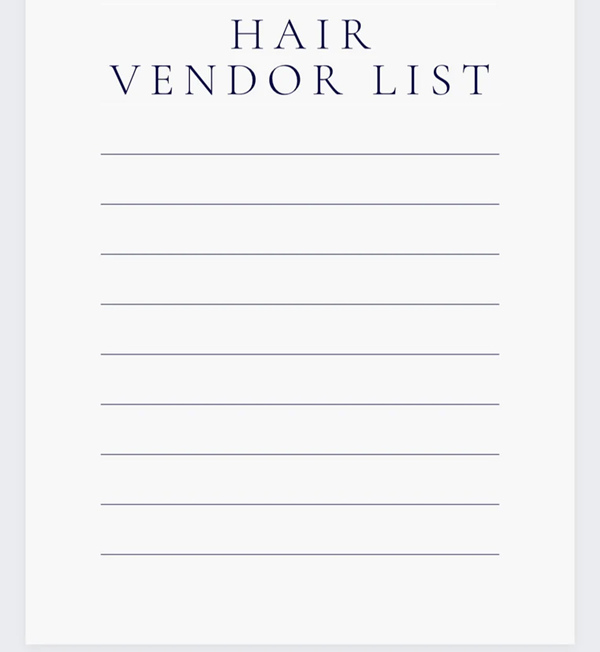
Benefits
- Time-saving: Vendor lists provide a curated selection of potential partners, saving businesses the time and effort of conducting extensive market research.
- Market exposure: Lists expose businesses to a diverse range of vendors, including lesser-known or niche suppliers, potentially offering unique products or competitive pricing.
- Industry insights: Well-researched lists may include market analysis, vendor profiles, and comparative data, providing valuable context for decision-making.
Limitations
- Outdated or incomplete information: Lists may become outdated quickly, as vendor details change or new players enter the market. Some listings may lack crucial information, such as pricing, minimum order quantities, or product specifics.
- Lack of vetting: Not all lists thoroughly evaluate or endorse the vendors included, leaving businesses responsible for conducting their own due diligence.
- Potential bias: Lists compiled by paid advertisers or sponsored content may prioritize certain vendors based on financial relationships rather than merit.
Factors Influencing Cost
- Number of vendors: Lists with a larger number of suppliers typically command higher prices due to the increased research and compilation efforts involved.
- Depth of information: More comprehensive lists featuring detailed vendor profiles, market insights, and comparative data may be priced higher than those offering basic contact details.
- Exclusive access: Premium lists that offer exclusive, hard-to-find vendors or proprietary market analysis may command a premium price.
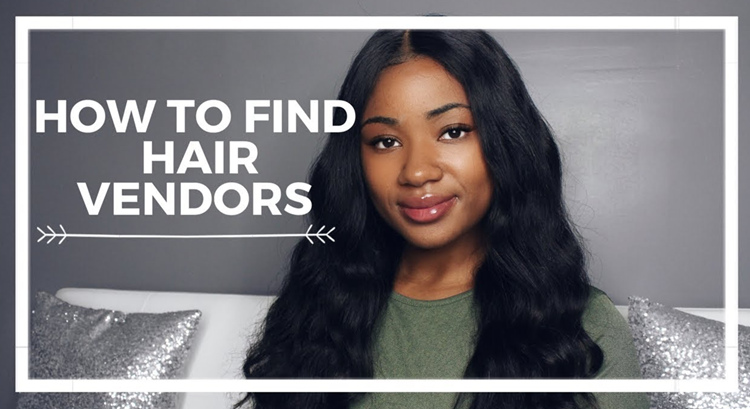
Step-by-Step Guide to Finding Suitable Vendors
Diversify Search Channels
- Google: Use targeted keywords (e.g., "wholesale hair vendors," "virgin hair factory," "raw hair vendor") to locate potential suppliers. Analyze their website content, blog posts, and About Us sections to gauge their industry expertise and professionalism.
- Social Media: Explore platforms like Instagram, Facebook, and LinkedIn to discover vendors, assess their engagement with customers, and gather user-generated content and reviews. Join relevant groups or follow industry influencers to stay informed about emerging trends and recommended suppliers.
- Trade Shows: Attend industry events to meet vendors face-to-face, examine their products firsthand, and discuss business opportunities. Trade shows often feature educational seminars and workshops that can deepen your understanding of the market.
- Referrals: Leverage your professional network, fellow business owners, or industry associations to obtain recommendations and insights about trusted vendors.
Assess Vendor Credibility
- Website: Evaluate the vendor's website for professionalism, user-friendliness, and informative content. Check for clear product descriptions, pricing information, and detailed policies on shipping, returns, and privacy.
- Reviews: Scrutinize customer reviews across multiple platforms, paying attention to recurring themes, both positive and negative. Be wary of fake or manipulated reviews and seek out balanced perspectives.
- Transparency: Inquire about the vendor's hair sourcing practices, processing methods, and ethical considerations. A transparent supplier will openly discuss these topics and provide evidence of their commitment to sustainability and fair trade.
Request Samples, Test Policies, and Minimum Order Requirements
- Samples: Request product samples to assess the hair's quality, texture, color matching, and overall suitability for your target market. Test the samples through washing, styling, and color treatments to gauge their durability and ease of maintenance.
- Testing Policies: Understand the vendor's policy on accepting returned samples, any associated fees, and the timeframe for evaluating products. Clarify whether they offer product guarantees or warranties.
- Minimum Order Requirements: Determine the vendor's minimum order quantity (MOQ) and assess whether it aligns with your inventory management strategy and financial capabilities. Inquire about any volume discounts or tiered pricing structures that may apply as your order size increases.
Negotiate Terms, Payment Options, and After-Sales Support
- Terms: Discuss payment terms, such as net 30 or net 60, and explore the possibility of extended credit or flexible payment plans, especially for larger orders. Negotiate favorable shipping terms, including free or discounted shipping thresholds, expedited options, and reliable delivery timelines.
- Payment Options: Ensure the vendor accepts secure and convenient payment methods, such as credit cards, PayPal, or bank transfers. Inquire about the availability of escrow services or other protections for large transactions.
- After-Sales Support: Clarify the vendor's commitment to after-sales support, including product troubleshooting, warranty claims, and returns or exchanges. Establish a clear communication channel and protocol for addressing any issues that may arise post-purchase.
By diligently following this step-by-step guide, businesses can methodically navigate the wholesale hair vendor selection process, increasing the likelihood of identifying and partnering with a supplier who meets their unique needs and contributes to their long-term success in the industry.
Maximizing Your Partnership with Wholesale Hair Vendors

Building Strong Relationships
Once you've identified and established a relationship with a suitable wholesale hair vendor, it is essential to nurture and strengthen this partnership for mutual benefit. Key strategies to foster strong relationships include:
- Communication: Maintain open and regular communication with your vendor, keeping them informed of your business needs, market trends, and customer feedback. Schedule periodic check-ins via phone, email, or video conferencing to discuss order status, upcoming promotions, or any concerns. Promptly respond to their inquiries and keep them updated on changes in your ordering patterns or requirements.
- Loyalty Programs: Participate in any loyalty or reward programs offered by your vendor, which may include volume discounts, early access to new products, or exclusive promotional opportunities. These programs can help reduce costs, improve cash flow, and solidify your position as a valued customer.
- Feedback Mechanisms: Implement structured feedback loops to share your experiences with the vendor, both positive and constructive. Provide timely feedback on product quality, packaging, shipping, and customer service, enabling the vendor to continuously improve their offerings. Recognize and acknowledge exceptional service or product performance, fostering a culture of appreciation and collaboration.
Staying Updated on Industry Developments and Vendor Offerings
Staying abreast of industry advancements and vendor innovations is crucial for staying competitive and capitalizing on emerging trends. To stay informed:
- Subscribe to Industry Newsletters: Sign up for newsletters, blogs, or trade publications that cover the hair industry, providing insights into new products, technologies, and market trends.
- Attend Webinars and Conferences: Participate in virtual or in-person industry events, where vendors often showcase their latest products and share insights on upcoming trends and innovations.
- Follow Vendors on Social Media: Monitor your vendor's social media accounts for announcements, product launches, promotions, and behind-the-scenes glimpses of their operations. Engage with their content to demonstrate your interest and support.
- Maintain Direct Contact: Regularly communicate with your vendor's sales representative or account manager to inquire about new products, special deals, or upcoming promotions. They can provide personalized recommendations based on your business's specific needs and preferences.
Managing Inventory, Forecasting Demand, and Optimizing Reorder Processes
Efficient inventory management is vital for maintaining optimal stock levels, minimizing holding costs, and ensuring customer satisfaction. To achieve this:
- Demand Forecasting: Utilize historical sales data, market trends, and seasonal fluctuations to accurately forecast future demand for different hair products. Incorporate insights from your vendor regarding anticipated changes in consumer preferences or market shifts.
- Inventory Optimization: Employ inventory management software or tools to monitor stock levels, track product turnover rates, and generate reorder alerts when stock reaches predetermined thresholds. This helps prevent stockouts, overstocking, and excess carrying costs.
- Streamlined Reordering: Establish a seamless and efficient reorder process with your vendor, which may include automated purchase orders, electronic data interchange (EDI) systems, or dedicated account portals. Ensure clear communication on lead times, shipping schedules, and any changes to order quantities or product specifications.
Leveraging Vendor Expertise for Market Insights, Customization, and Private Labeling Opportunities
Your wholesale hair vendor can be a valuable source of industry knowledge and support beyond supplying products. Tap into their expertise to:
- Market Insights: Consult with your vendor on market trends, consumer preferences, and competitive landscape analysis. They may have access to proprietary market research or insights from their extensive customer base that can inform your product selection, pricing, and marketing strategies.
- Customization: Collaborate with your vendor to develop custom hair products or exclusive blends tailored to your target audience. This could involve unique color combinations, specialized textures, or innovative attachment methods that set your offerings apart from competitors.
- Private Labeling: Explore private labeling opportunities with your vendor, allowing you to sell their high-quality products under your own brand name. This can enhance brand recognition, customer loyalty, and profit margins. Discuss design options, minimum order quantities, and any additional costs associated with private labeling.
By actively cultivating strong relationships with your wholesale hair vendor, staying informed about industry developments, managing inventory effectively, and leveraging their expertise for market insights and customization, you can maximize the value derived from this partnership and position your business for continued success in the dynamic hair industry.
Case Studies and Success Stories
Real-World Examples of Businesses That Have Thrived Through Strategic Partnerships with Wholesale Hair Vendors
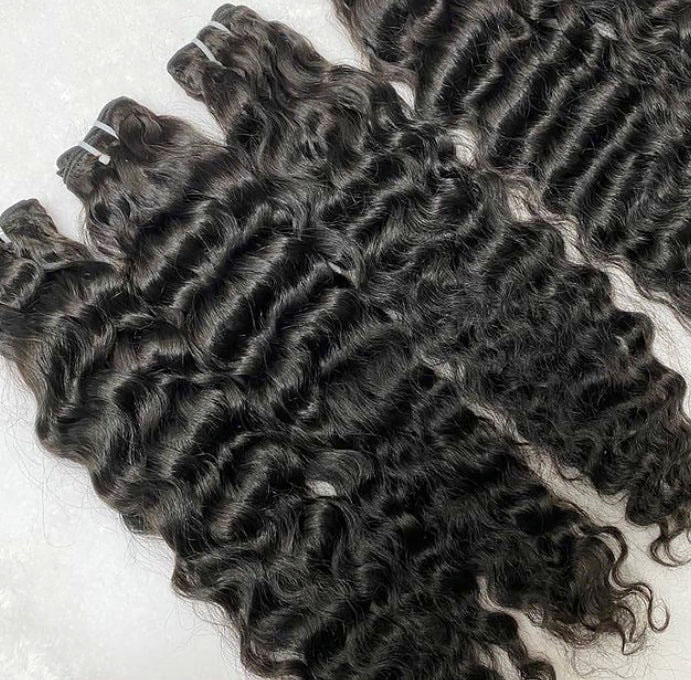 Chiuin Raw Burmese Curl Hair
Chiuin Raw Burmese Curl Hair
To illustrate the tangible benefits of partnering with the right wholesale hair vendor, consider the following real-world examples of businesses that have achieved remarkable success through strategic collaborations:
- SalonChain: A rapidly growing chain of high-end salons specializing in premium hair extensions and wigs. By partnering withChiuin Hair (a reputable factory-based supplier) known for their intact cuticle raw hair, SalonChain secured a consistent supply of high-quality products at competitive prices. This partnership enabled them to differentiate themselves in the market, attract discerning customers, and achieve double-digit annual revenue growth.
- Elevate Extensions: An e-commerce platform offering a diverse range of hair extensions and accessories. Elevate Extensions forged a close relationship with a primary producer based in India, gaining exclusive access to rare hair textures and colors. This unique product offering, combined with the vendor's exceptional customer support and flexible payment terms, helped Elevate Extensions establish a loyal customer base and achieve a significant market share in just three years since launch.
- Coiffure Couture: A boutique hair salon that ventured into private labeling by collaborating with a wholesale hair vendor experienced in custom product development. Coiffure Couture worked closely with the vendor to create a signature line of luxury hair extensions, featuring proprietary blends and innovative attachment methods. The resulting private label products not only boosted the salon's brand identity but also contributed to a substantial increase in average transaction value and customer retention.
Lessons Learned and Best Practices Derived from These Case Studies
These success stories highlight several key lessons and best practices for businesses seeking to forge successful partnerships with wholesale hair vendors:
- Align with vendors who share your values: Choose vendors that prioritize ethical sourcing, quality control, and environmental sustainability, as these attributes resonate with today's socially conscious consumers and can differentiate your brand in the market.
- Leverage exclusive product offerings: Partner with vendors who can provide unique hair textures, colors, or blends that cater to niche markets or allow you to offer something truly distinctive to your customers.
- Embrace private labeling opportunities: Collaborate with vendors experienced in custom product development to create a private label line that strengthens your brand identity, enhances customer loyalty, and boosts profit margins.
- Establish strong communication channels: Maintain open and frequent communication with your vendor to ensure mutual understanding of business needs, market trends, and customer feedback. This fosters a collaborative environment conducive to problem-solving and continuous improvement.
- Seize value-added services: Take advantage of vendor-provided services like inventory management support, market insights, and training programs, which can help streamline your operations, stay ahead of industry trends, and enhance your team's expertise.
- Negotiate favorable terms: Work with vendors to secure competitive pricing, flexible payment terms, and volume discounts that align with your business's financial goals and growth trajectory. This can improve cash flow, reduce costs, and enhance your competitiveness in the market.
By learning from these real-world success stories and applying the lessons and best practices outlined, businesses can forge powerful partnerships with wholesale hair vendors that drive growth, enhance brand equity, and ensure long-term success in the dynamic hair industry.

Conclusion
Recap of Key Points
This comprehensive article has delved into the intricacies of the wholesale hair vendor landscape, emphasizing the critical role these suppliers play in the success of businesses operating within the hair industry. Key takeaways include:
- Understanding the wholesale hair vendor landscape: The importance of recognizing the diverse roles and capabilities of vendors, ranging from primary producers to factory-based suppliers, and staying attuned to market dynamics, sourcing hubs, hair types, and product varieties.
- Navigating the vendor selection process: The need to evaluate potential vendors based on criteria such as reputation, reliability, product quality, pricing, and customer support, utilizing hair vendor lists, diversifying search channels, and following a step-by-step guide for assessing and negotiating with suppliers.
- Maximizing partnerships: The significance of building strong relationships with vendors through effective communication, loyalty programs, and feedback mechanisms, staying updated on industry developments and vendor offerings, managing inventory efficiently, and leveraging vendor expertise for market insights, customization, and private labeling opportunities.
- Real-world success stories: The value of studying case studies and extracting lessons learned from businesses that have thrived through strategic partnerships with wholesale hair vendors, highlighting the importance of aligning values, embracing exclusive offerings, private labeling, strong communication, value-added services, and favorable terms.
Encouragement for Readers to Apply Insights
Having explored these essential aspects of working with wholesale hair vendors, we strongly encourage readers to apply these insights to their own vendor search and partnership management. Whether you are a startup venturing into the hair industry or an established business seeking to optimize your supply chain, the knowledge gained from this article can serve as a roadmap to identifying and collaborating with the right suppliers, ultimately driving growth, profitability, and customer satisfaction.
Remember that the wholesale hair vendor landscape is constantly evolving, and staying adaptable, informed, and proactive in your approach to vendor relationships is crucial for sustained success. Continuously reassess your vendor partnerships, adapt your strategies based on changing market conditions, and remain open to exploring new opportunities and innovative solutions.
By actively engaging with the author or platform, you can continue to expand your knowledge, refine your strategies, and stay at the forefront of the dynamic wholesale hair vendor landscape, ensuring your business remains well-positioned for long-term success in this thriving industry.






 Chiuin Raw Burmese Curl Hair
Chiuin Raw Burmese Curl Hair
